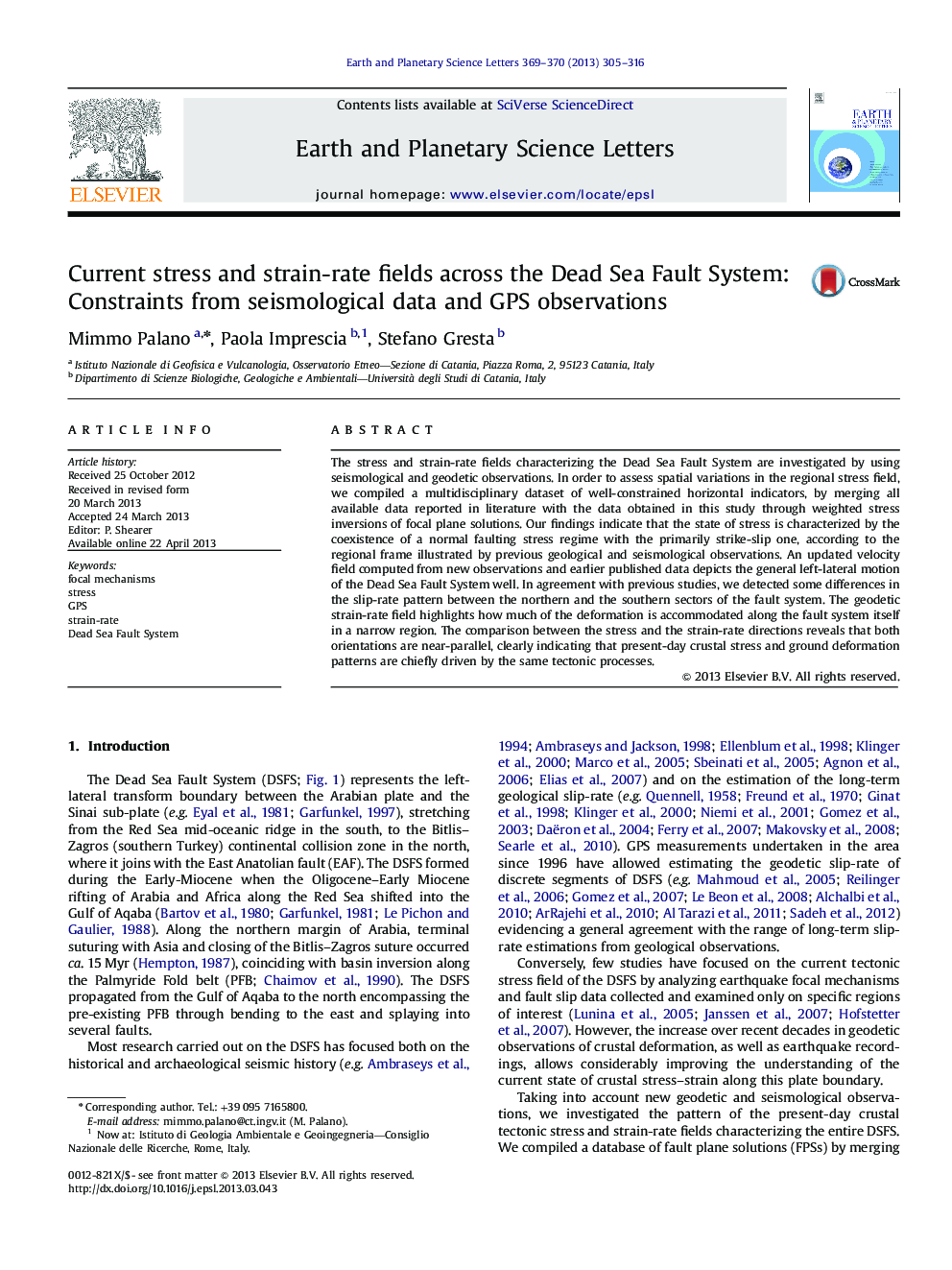| کد مقاله | کد نشریه | سال انتشار | مقاله انگلیسی | نسخه تمام متن |
|---|---|---|---|---|
| 4677116 | 1634784 | 2013 | 12 صفحه PDF | دانلود رایگان |

• An updated GPS velocity field and a focal plane solutions database for DSFS.
• We investigated the pattern of contemporary stress/strain-rate fields.
• Much of the deformation is accommodated along the DSFS itself in a narrow region.
• Current stress and strain are primarily driven by the same tectonic processes.
The stress and strain-rate fields characterizing the Dead Sea Fault System are investigated by using seismological and geodetic observations. In order to assess spatial variations in the regional stress field, we compiled a multidisciplinary dataset of well-constrained horizontal indicators, by merging all available data reported in literature with the data obtained in this study through weighted stress inversions of focal plane solutions. Our findings indicate that the state of stress is characterized by the coexistence of a normal faulting stress regime with the primarily strike-slip one, according to the regional frame illustrated by previous geological and seismological observations. An updated velocity field computed from new observations and earlier published data depicts the general left-lateral motion of the Dead Sea Fault System well. In agreement with previous studies, we detected some differences in the slip-rate pattern between the northern and the southern sectors of the fault system. The geodetic strain-rate field highlights how much of the deformation is accommodated along the fault system itself in a narrow region. The comparison between the stress and the strain-rate directions reveals that both orientations are near-parallel, clearly indicating that present-day crustal stress and ground deformation patterns are chiefly driven by the same tectonic processes.
Figure optionsDownload high-quality image (381 K)Download as PowerPoint slide
Journal: Earth and Planetary Science Letters - Volumes 369–370, May 2013, Pages 305–316